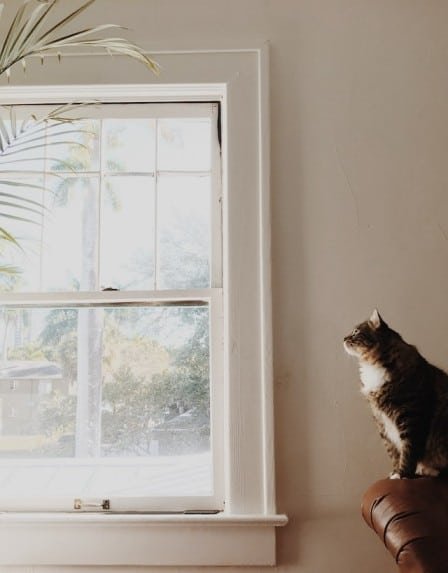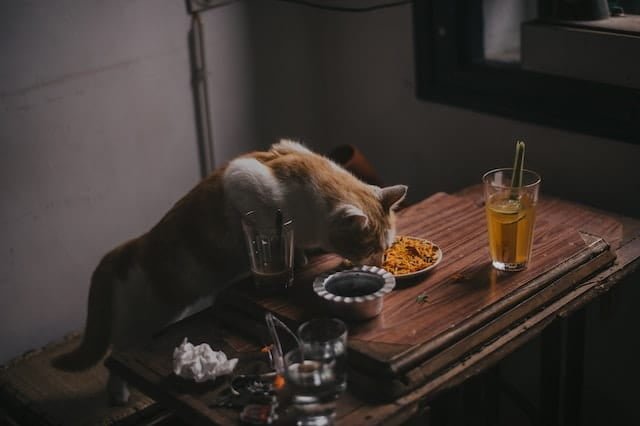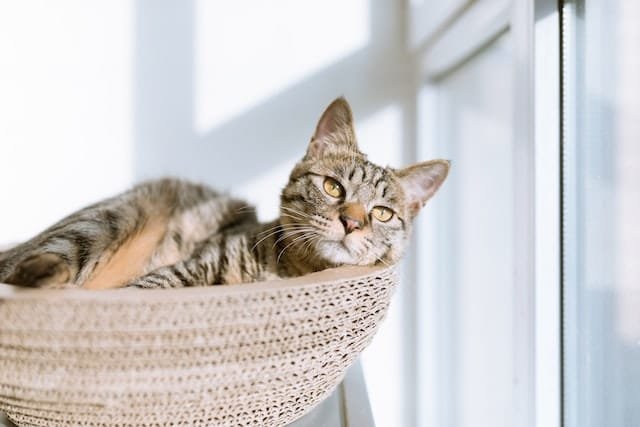Summers are getting hotter every year, and dealing with hot weather is becoming more challenging. This is not only true for us humans but also for animals. However, it seems that our pets are in a harder position than us during the excess summer heat.
After all, we developed several strategies for cooling down, while our pets can only shed some of their furs. Until recently, that was enough, but with global warming, many animals are not well-equipped to deal with increased temperatures.
Cats are animals that naturally thrive in warm climates. But even for them, US summers can be a bit too much. If you plan to get yourself a cat and you wonder how to take care of it when the weather becomes hot, you are in the right place!
Of course, even if you are a seasoned cat owner, you want to make sure you are providing your cat(s) with the best care possible during the hot summer months. So, without further ado, read more about how to care for your cat in hot weather!
Best Cat Care Tips For Hot Weather
Below, you can find some care tips that will help you and your cat survive this summer. Keep in mind that maybe not all of the tips are applicable to your situation. But with so many tips, you will surely find something that works for you and your cat.
Choose a Breed That Can Adapt to Hot Weather

If you already own a cat, skip this one. This tip is applicable to future cat owners that don’t have a cat yet but plan to get one in the incoming period.
In general, cats do well in hot weather, but some breeds are simply better equipped for such conditions than others. These are usually the breeds that originated in hot-climate countries, and as such, they thrive in areas with hot weather.
Other great breeds for hot weather are those that have physical traits that are desirable when living in places with higher temperatures. More often than not, these physical traits are correlated with the breed’s origins. However, there are some breeds that didn’t originate in countries with a hot climate, but they still developed these desirable traits.
Regardless of the country of origin, the most optimal physical traits for hot weather are slender and small to medium-sized bodies, large ears, and short and sparse furs. Cats with these traits deal with high temperatures much more efficiently than other cats.
Some of the breeds that fit most of these origin and/or physical requirements are Abyssinian cats, Siamese cats, Cornish Rex cats, Khao Manee cats, Lykoi cats, etc. So, if you arestill just considering getting a cat, one of these breeds might be a great choice! Also, go check out our post in 12 breeds that actually thrive in hot weather.
Groom Your Cat’s Fur Regularly
This one should be obvious, even when it’s not hot outside. However, when the temperatures rise, your cat will probably shed some of its fur hair, just like us humans start wearing fewer and fewer clothes.
To help your cat get rid of the unnecessary hairs, you should brush its fur regularly, at least every 2-3 days. This will prevent any tangling and matting, and it will remove the loose hairs.
If your cat is long-haired, consider taking it to a professional pet groomer for a haircut. The pet groomer will shorten your cat’s fur, which will further help your cat regulate its temperature in hot weather. Additionally, your cat will look awesome!
If your cat is one of those cats that enjoy water and baths, you can also make it happy by including occasional baths in its grooming routine. Make sure that you still use lukewarm water and gentle products made specifically for cats.
Keep Your Cat Hydrated
Cats don’t drink as much water as dogs or some other pets, but they still need some water to stay hydrated. This is especially true during summer when your cat loses lots of fluids. You need to make sure your cat has access to fresh, cold water.
You can even put some ice cubs into the water. They will bring the water temperature down by a few degrees, and your cat will love to chase them in the water bowl. Of course, you shouldn’t overdo it, 4-5 ice cubes will be enough.
Apart from providing your cat with iced water, you should also increase the proportion of wet vs. dry cat food. Wet food, as its name clearly suggests, contains much more fluids than the dry cat food, and as such, it is another great source of hydration for your cat.
Keep Your Cat Indoors in Really hot weather

Cats should stay indoors throughout the year because they are much safer than when outside and the chance of them running away or getting lost is almost zero. Apart from that, indoor cats are protected from the elements, and they are less likely to overheat during the summer.
Make sure that your house is well-ventilated with lots of air circulation. There are certainly some shaded places in your home, and they are perfect for your cat to get away from the heat and too much sunlight.
Don’t forget to turn the AC on. However, don’t overdo it; you don’t want your home to be too cold. Keep your home temperature between 68 and 74 F.
Choose Wisely When To Go Out during hot weather
If you have no other option than to go out with your cat for a walk or something else, avoid going out when the daytime temperatures are peaking. Instead, choose either morning or evening for going out with your cat.
In the evening or morning, temperatures are much lower than around noon, so it will be more pleasant both for you and your cat. Also, most domestic cats are actually more active in the morning and evening, so taking them out for a walk during that time is definitely a good choice.
Finally, if you live in an urban area, you probably know how heated asphalt can get in the middle of the day. This is another reason why you should never let your cat outside around noon in the summer – it can burn its gentle paws on hot pavement/road.
Use a Sunscreen
People are getting more aware of all the dangers that long-term sun exposure brings along. This is why more and more people are regularly using various sunscreens, and hopefully, you do so too.
Of course, if you have a cat or plan to get one, please know that your pet will also need some sunscreen, especially if it is hairless and hence, has no fur as protection against the harsh sunlight.
However, if you thought of sharing your sunscreen with your cat, that’s not a smart idea at all. Human cosmetic products can be full of ingredients that are toxic for cats or can cause some fur and skin issues.
Instead, find a pet-safe sunscreen with a formula specifically developed for cats. Most of these cat sunscreens come in the form of a spray, which makes them easier to apply. Simply spray your cat with it, paying the most attention to those body parts that are less covered with fur.
The ears and the area above the nose are particularly vulnerable to UV rays. They are also close to your cat’s eyes, so using a spray sunscreen is not such a good idea. Instead, for these areas, buy a cream sunscreen that you can gently rub into the cat’s skin.
When choosing the best sunscreen for your cat, always consult your vet. They will be able to recommend you the best and the safest products.
Go To The Park or Countryside

Do you live in an area with lots of parks or close to some meadows or forests? Maybe you have some relatives or friends that live in the countryside nearby? If the answer to any of these questions is yes, why don’t you get your cat into the car and go for a short trip?
Put a leash on your cat and spend a day in nature together. You can enjoy a picnic by bringing snacks for both you and your cat. It will be refreshing to spend some time away from the traffic, pollution, and so much concrete.
Scientists have proven long ago that vegetation reduces the air temperature by several degrees, which is why cities are so much hotter in the summer than the countryside. Use this knowledge to your cat’s advantage.
hot weather = Damp Towels
This is another neat trick that I personally tried, and it really works! It is simple; you just need to wet your old towel with cold water. Place it on the floor, somewhere where you know your cat will come to lie on it.
Make sure that the towel is damp but not dripping with water. After a few hours, as the towel goes slowly dry, wet it again under the cold water. Your cat will enjoy lying on it because it keeps her stomach and torso areas cool, which in turn cools down the rest of your cat’s body.
However, keep in mind that not every cat will enjoy this. I have seen some cats that aren’t really fond of this method. Don’t get surprised or disappointed if it turns out that your cat is one of them.
Alternatively, you can try and gently mist your cat with a spray bottle full of cold water. Make sure that you set the bottle to the “mist” setting, not to the “spray” setting.
Use a Fan
Not the handheld one, of course, unless you want to appear like your cat’s slave (which you already are). If your home doesn’t have AC installed, if you can’t use it for some reason, or if it isn’t strong enough and doesn’t cover the whole home, an electric fan is a decent alternative.
Electric fans are usually affordable, and while not as effective as AC, they can still bring some relief during the hot summer months. If your cat has a favorite hangout spot, you could buy an electric fan and install it close to where your cat dwells.
Of course, make sure that your cat won’t try to mess with the fan, or at least that it won’t get hurt. From my personal experience, none of my cats ever touched the fan, but just in case, keep an eye on your cat when the fan is on, at least for the first few days.
Keep The Activity Levels Low during hot weather
As much as your cat loves to play, it will have to turn down its activities by a notch. Physical activity raises the body temperature, and your cat will probably be less inclined to run and jump around when it is too hot.
So, if you notice your cat is chilling and waiting for the heat wave to pass, don’t disturb it and entice it to play. Instead, you can cuddle it, talk to it, or find another low-effort activity to enjoy together.
Watch The Food

Cats should never eat seasoned or salty foods because their kidneys are small and sensitive, and too much salt in the food can cause permanent kidney damage. Additionally, salty and seasoned foods increase thirst, especially during hot weather.
Another thing worth mentioning is that your cat will likely have a decreased appetite during hot summer days. Keep that in mind when planning the portion size. The last you want is uneaten food sitting for hours. Hot weather is a perfect opportunity for various pathogens to develop in food leftovers
Keep Your Cat Fit
Obese cats experience more problems during the hot weather than cats with a healthy weight. I know it is tempting to feed your cat whenever it wants, and chonky cats are ridiculously cute, but keeping your cat at its optimal weight is a great way to prepare it for the summer.
What’s an optimal weight? That depends not only on the breed but also on the individual cat, so please consult your vet. The vet will be able to tell you whether your cat is at its optimal weight or not and how to achieve it.
Things To Avoid Doing During hot weather
Do you want to know what not to do with your cat during the hot summer months? The answer is simple and obvious: don’t do anything opposite to the tips from the previous section. This includes:
- Don’t get a cat that’s more adapted to life in cold areas
- Avoid letting your cat outside without a good reason
- Don’t let your cat outside during the hottest hours
- Avoid letting your cat go outside without wearing a sunscreen
- Don’t feed your cat spicy and salty foods
- Avoid overfeeding your cat during the winter
All these DON’Ts are common sense, especially when you carefully read all the DOs that I talked about. Still, I thought it wouldn’t hurt to mention some of these things to avoid.
Symptoms of Heat Stroke and Sunburn in Cats

Despite your best efforts, you suspect your cat might be suffering from a heat stroke and/or sunburn. How do you know your suspicion is correct? Here are some symptoms:
- Panting
- Drooling
- Lethargy
- Difficulty breathing
- Bright red tongue
- Red or pale gums
- Vomiting
- Diarrhea
- Restlessness
- Red and inflamed skin
- Painful blisters on the skin
- Increased body temperature
If you notice any of these symptoms and you wonder what to do, the answer is obvious: take your cat to the vet as soon as possible. But first, you need to cool down your cat so that you prevent any damage until you arrive at the vet.
Follow the applicable tips from above to bring your cat’s body temperature down. This mainly includes bringing your cat into a cold and shaded room and maybe gently patting it with a wet and cold towel. Don’t forget to offer some fresh drinking water to your cat.
Disclaimer: don’t try to bring your cat’s body temperature down abruptly. It could take your cat into a state of shock or even cause some heart issues. Instead, do it gradually and gently.
Conclusion
Cats are resilient animals that are naturally inclined to live in warm areas. However, summers are becoming extremely hot lately, and cats can suffer from such climate changes, just like us humans and other animals do.
To make sure your cat stays safe and cool during the summer, follow the tips from this article. By knowing what to do during the intense heat, you will also know what not to do. Finally, you should also know what to do in case hot temperatures become too much for your cat.
